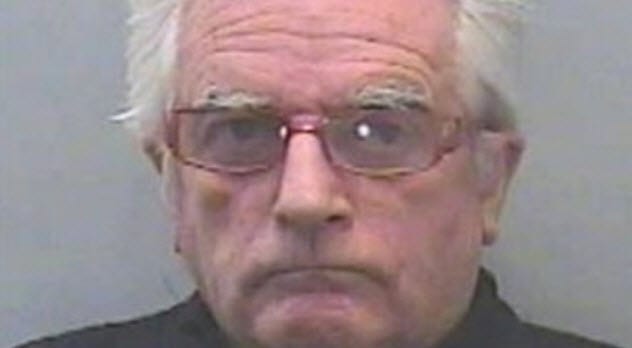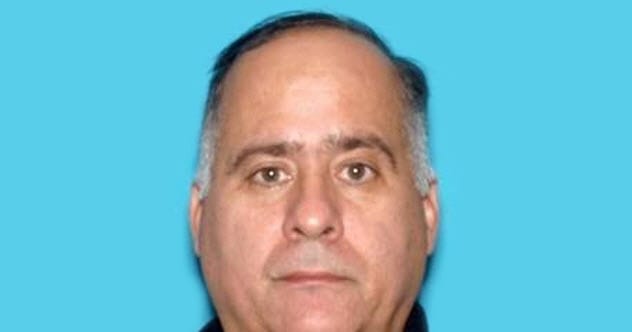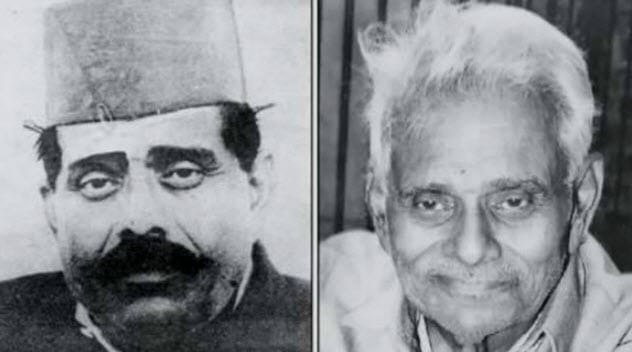It also takes a lot of confidence and a lack of guilt to lie, cheat, and manipulate people into giving away everything they have. And some con artists, such as Victor Lustig, took their craft to a whole other level. He became famous for selling the Eiffel Tower twice. Even though Victor Lustig might be the most famous example, he was neither the first nor the last person to sell something he did not own. Many other con artists have successfully sold land, buildings, and modern-day technology which may not have even existed. Here are just a few examples.
10 Brian Kiddell
Brian Kiddell, a 75-year-old tenant, sold his landlord’s house in Devon, England. The rightful owner found out that his property was on the market when he drove past the building and noticed a “For Sale” sign. But Kiddell had already sold the house online for £90,000 and made off with the money. It was later discovered that Kiddell had been renting the house with the name and passport of Paul Stevenson—a man who had died in 2004. After renting for four months, Kiddell put the house up for sale while posing as owner David Ayton. According to a bank, Kiddell had also attempted to transfer £18,000 under a false name. He claimed to be the brother of the account’s owner and presented a fake death certificate. The bank blocked the transfer when the real account owner showed up alive. Kiddell was arrested when he turned up at an appointment under another fake name after applying for a £25,000 loan. He claimed that an organized crime gang had forced him to take part in frauds to pay back the money he owed. In 2013, Brian Kiddell was jailed for six years after admitting to nine charges of fraud, theft, and dishonest use of a dead man’s passport.[1]
9 Rodrick Samuels
Fraudsters often succeed in selling houses because most people would never expect to be scammed and do not recognize the documents necessary for a sale. The Jamaican man Rodrick Samuels is another example of this type of con. He was the legitimate owner when he sold a one-bedroom concrete structure for $55,000 in 2013. But in 2015, Samuels earned another $70,000 by selling the house for a second time. Unlike some swindlers, Samuels did not get away with it for long. He appeared in the Corporate Area Resident Magistrate’s Court two months later. When asked why he should not go to prison for the crime, Samuels said, “I have an eight-year-old son going to school, and I’m sorry for what I did.”[2] However, having children is no excuse not to serve time. The court ordered him to either pay $100,000 or spend six months in prison.
8 Gregory B. Bartucci
A man was searching for a second boat on Craigslist in 2013 when he noticed that someone had listed his boat for sale. It was the same boat he was storing for the winter in Linden, New Jersey. The man arranged a meeting with the person trying to sell it. Turns out that the seller was 49-year-old Gregory Bartucci who was using the name Chad. After meeting Bartucci, the boat’s owner contacted the police. They arrested Bartucci, who was held on $10,000 bail pending a court hearing. Then he was sentenced to five years’ probation. Later, police discovered that this was not the first time that Bartucci had tried to sell something he did not own. In 2015, authorities found him guilty of selling two bulldozers. The scam had occurred in 2011 when a company agreed to buy the equipment for $42,500 from a fake company set up by Bartucci. When somebody went to pick up the bulldozers, the legitimate owners explained that the machines had never been for sale. Records also state that Bartucci was convicted of theft by deception in 1999 and fencing in 2007.[3]
7 James Symons
Crown Prosecution Service lawyer Robert Hutchinson said: “He offered discounted high-value goods like TVs at bargain prices with no intention of delivering them. The timing of the scam, before Christmas each year, was also no coincidence, aiming to prey on anybody looking for a bargain.”[4]
6 Nicolae Popescu
Nicolae Popescu is a Romanian fugitive who sold nonexistent cars, boats, motorcycles, and other expensive items. He mainly used popular websites like Cars.com and Autotrader.com to prey on American buyers. With a team of other con men, Popescu stole over $3 million. To this day, Popescu remains a subject of the Interpol “red notice”—an international arrest warrant—along with several members of his crew. Six of the coconspirators were arrested in a coordinated international takedown in 2012. Popescu even landed a spot on the FBI’s Ten Most Wanted Fugitives list. The US Department of State’s Transnational Organized Crime Rewards Program offers a $1 million reward for information that leads to his arrest.[5]
5 Craig Stevens
A California man was accused of scamming almost $4.3 million by selling fake In-N-Out Burger franchises in the Middle East. According to prosecutors, 55-year-old Craig Stevens reached out to investors in 2014 asking for $150,000 per location and an additional $250,000 per year in royalties. Stevens tricked 10 investors in a little over one year. And the scam might have continued a lot longer if he had not emailed the fraudulent agreements, which made him guilty of wire fraud. That was the reason for his arrest and led to a two-year sentence in federal prison with three additional years of supervised release.[6] What makes this con particularly impressive is the lack of care from the investors. In-N-Out has been privately owned since 1948, does not have partnerships with third parties, and does not enter franchise agreements. Anyone could have reached out to the company directly and acquired more information. Even spending one minute on a Google search would have revealed the scam immediately.
4 George C. Parker
Since the completion of the Brooklyn Bridge in 1883, numerous con artists have tried to sell it to gullible strangers. A few of them have been successful. Around the turn of the 20th century, George C. Parker, then 20, pulled off more sales than anyone else. Parker approached people who looked like they would fall for his scam and engaged in a conversation about a plan to set up a toll booth on the newly built bridge. He pretended to be a busy engineer who had other things to build and needed help with managing the booth. The victims believed that they could make a great profit by collecting fares from everyone that crossed the bridge. If the targets seemed interested, Parker steered the conversation toward his lack of time for such a task and offered to sell the bridge.[7] This ploy worked many times. Parker sold the bridge for as little as $50 if the target was poor. He received up to $50,000 from wealthier individuals. He even offered loans to those who could not afford the purchase right then, charging monthly interest on top of what he received immediately. Police had to intervene when several bridge buyers tried to erect barriers and collect tolls. Forged documents played a major role in gaining the target’s trust and assisted in some of Parker’s other landmark sales, including Grant’s Tomb, the Metropolitan Museum of Art, and the Statue of Liberty.
3 Emmanuel Nwude
Most people are familiar with the Nigerian Internet fraud phenomenon. But one Nigerian con artist named Emmanuel Nwude pulled off a much bigger scam in the late 1990s before the Internet’s prime. He sold an entire airport that did not even exist. The unfortunate buyer was Nelson Sakaguchi, a Brazilian bank director. Thanks to his own position as the director of Union Bank of Nigeria, Nwude had access to various documents and information which helped him pull off the scam. Impersonating the governor of the Central Bank of Nigeria, Nwude contacted Sakaguchi and informed him of a plan to build an airport in Nigeria’s capital city, Abuja. The offer of a $10 million commission for the finished airport was too sweet for Sakaguchi to pass up. Nwude and his five accomplices received $191 million in cash and the rest in the form of outstanding interest, adding up to $242 million. It is still the third-largest banking scam in the world. An investigation began when a Spanish bank wanted to take over the Brazilian bank in 1997 and found two-fifths of its total value missing. The bank’s owners had to pay the $242 million bill themselves to move the sale forward. In 2004, Nwude and his accomplices stood before an Abuja High Court on 86 counts of fraud and 15 counts of case-related bribery. Despite being warned to stop bribing court officials, Nwude attempted to bribe the Economic and Financial Crimes Commission chairman with $75,000 cash. The chairman refused to take the money. Nwude was charged with attempted bribery and an attempt to kidnap a prosecuting witness. He was sentenced to five concurrent sentences of five years and paid a $10 million fine to the federal government.[8]
2 Mithilesh Kumar Srivastava
Mithilesh Kumar Srivastava, better known as Natwarlal, is considered the greatest con man in India. And for good reason—he sold the Taj Mahal three times, among other scams and several prison escapes. Natwarlal was a lawyer before he scammed people. His arsenal consisted of more than 50 aliases and masterful signature forging skills. Simply watching someone’s hand movement was enough for him to imitate their signature. The notorious con artist stole an unknown amount of money well into the millions from various prominent businessmen. Besides three Taj Mahal sales, he also sold the Red Fort, Rashtrapati Bhavan, and the Parliament House of India.[9] Over 100 cases across eight states of India were linked to Natwarlal and earned him 113 years in prison. Even though he was arrested nine times, he escaped every single time and only served around 20 years of imprisonment in total. Once, he stole a police uniform and walked out of jail. A guard who aided his escape later found out that the bundle of notes that Natwarlal had given him was just pieces of paper. Another escape occurred when the con man was taken to a hospital and treated for a kidney disorder and urethral strictures. Police accompanied him when he stepped out of the hospital at midnight, but he vanished again along the way. Natwarlal broke free for the last time in 1996 at age 84 while being taken for treatment in a wheelchair. He disappeared at the New Delhi railway station and has never been seen since. Even his supposed death raises questions. Natwarlal’s brother claimed to have cremated him in 1996. But 13 years later, his lawyer filed a plea to dismiss over 100 pending charges against the con man, claiming his recent death in 2009.
1 Gregor MacGregor
Gregor MacGregor was a prickly Scottish military leader with a tendency to exaggerate. He left his homeland at 25 after his first wife’s death. MacGregor went to South America where he learned fluent Portuguese and Spanish. Venezuela had just declared independence under General Francisco de Miranda, who may have previously met MacGregor in London. Although MacGregor presented partly fraudulent credentials, Miranda desperately needed assistance and made him a colonel in charge of a cavalry regiment in 1812. MacGregor’s reputation quickly grew after a successful battle against royalist armies, and he led a few other battles within the next couple of years. In 1820, he even persuaded George Frederic Augustus I, the king of the Miskito Sambu and ruler of the Mosquito Coast, to give him 32,375 square kilometers (12,500 mi2) of land. Although the land was not entirely under the king’s control, he claimed it as a part of his territory. MacGregor named his land Poyais. The name is derived from a native tribe called Paya, which inhabited part of the territory. In 1822, MacGregor returned to Scotland and made an announcement that was too good to be true. He claimed to be a local banker’s son and the prince of the land of Poyais. According to MacGregor, Poyais was an island slightly larger than Wales. Its land was so fertile that it could yield three harvests a year. The trees were full of fruit, and the forests were full of animals to hunt. The water was so pure that it could quench any thirst, and the riverbeds were lined with chunks of gold. MacGregor said that Poyais was only missing enough settlers and investors. It sounded like paradise—in sharp contrast with the dark, rainy, and rocky Scotland. It was even more appealing because Scotland had no colonies of its own. To gain trust, the fraudster went all out on producing evidence. He fabricated a painting of Poyais under a pseudonym, wrote a book on the virtues of the island nation with the alias Thomas Strangeways, and even designed a fake currency that was supposedly used in the fictional country. He also published interviews in national papers and highlighted the bravery, fortitude, and intelligence of anyone who invested in Poyais. Those who remained unconvinced were pointed toward the elusive Dr. Strangeways who clearly knew what he was talking about. Only a fool would refuse such an opportunity. The scam was beyond successful. MacGregor raised £200,000 directly, and the bond market value reached £1.3 million. Soon enough, seven ships with hundreds of passengers set sail for Poyais. Two months later, the first two ships with about 250 colonizers and investors arrived at a desolate part of Honduras. They found none of the promised ports, developments, and resources. The fictional country was a wasteland. Two-thirds of the settlers died before a passing ship rescued them. The British Navy recalled the remaining five ships before they reached their destination. However, MacGregor was only getting started. He escaped to France where he pitched Poyais all over again. Within a few months, another group of settlers and investors was prepared to colonize the figment of MacGregor’s imagination. Luckily, France had more stringent passport requirements. The government investigated when they noticed a pile of applications to a country that nobody had ever heard of. The fraudster got imprisoned for less than a year because he managed to pin the blame on a partner in crime who fled to the Netherlands. He then spent 10 more years on less successful Poyais schemes and went back to Venezuela after the death of his second wife. The Venezuelan defense minister at the time was a veteran of the same battles as MacGregor and helped him receive a military pension. Gregor MacGregor died after seven years of retirement. He was buried as a hero with full military honors in 1845.[10]
























